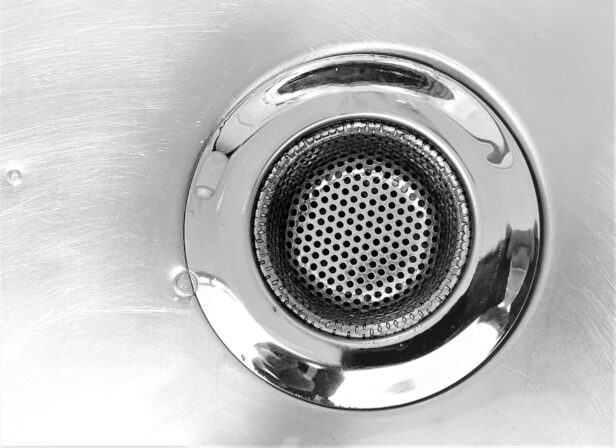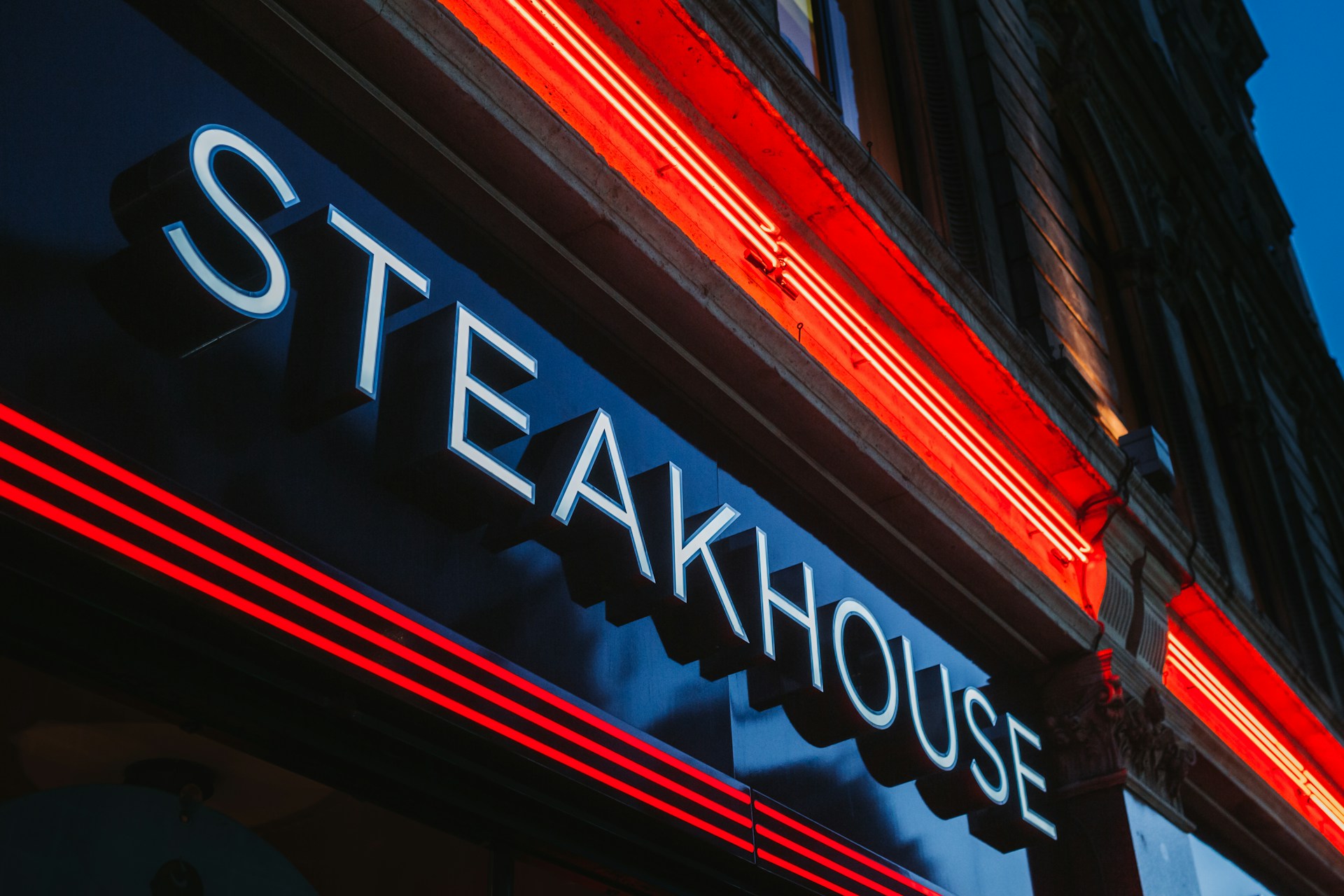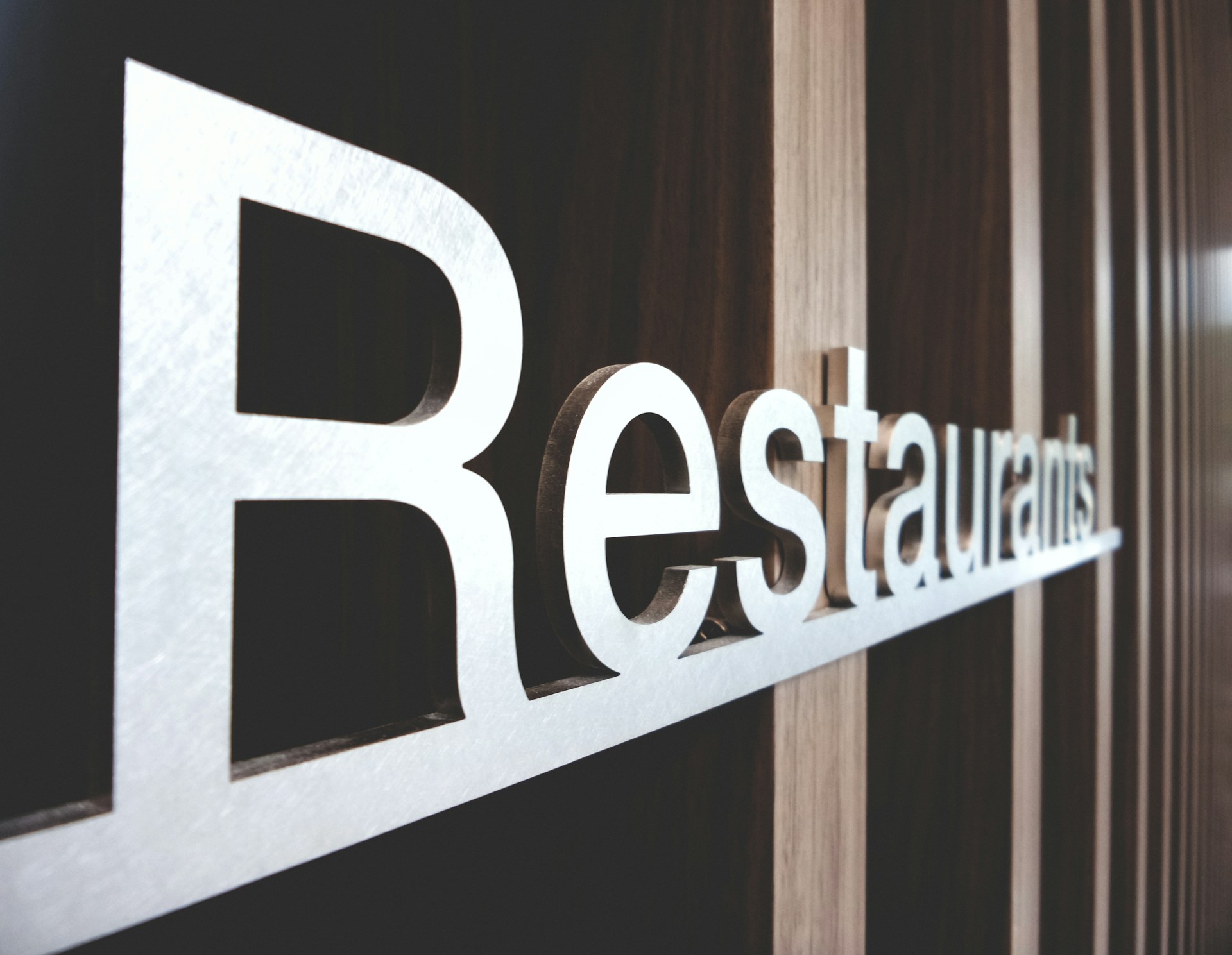Commercial kitchens differ significantly from residential ones regarding plumbing and drainage. We design and install systems specifically to handle the high-volume demands of food service operations, ensuring they meet strict health and safety standards. Unlike homes, commercial kitchens utilize industrial-grade fixtures and equipment that require robust drainage solutions.
Regulations for commercial kitchen plumbing are extensive and vary by location. We adhere to codes like the International Plumbing Code (IPC) and Uniform Plumbing Code (UPC), which establish rigorous benchmarks for sanitary drainage, venting, water supply, and waste management in food service environments. These codes are designed to safeguard public health, a critical concern when preparing food for mass consumption.
The complexity of commercial kitchen plumbing arises from the need to efficiently manage food waste, grease, and high-temperature water while preventing contamination. We install specialized grease interceptors, floor drains designed for heavy use, and corrosion-resistant piping to create systems that can withstand the demands of busy kitchens. Proper venting is also crucial to prevent sewer gases from entering food preparation areas.
When designing drainage for commercial kitchens, food safety is always a priority. The layout must allow for easy cleaning and prevent standing water where bacteria could grow. Strategic placement of floor sinks and drains helps kitchen staff maintain a hygienic environment. We also consider future maintenance needs, incorporating cleanouts and access points to simplify upkeep and repairs.
Understanding these unique requirements is essential for anyone involved in commercial kitchen operations or renovations. Proper plumbing isn’t just about code compliance – it’s a foundational element of food safety and operational efficiency in professional food service.
What Are the Essential Drainage System Components for Commercial Kitchens?
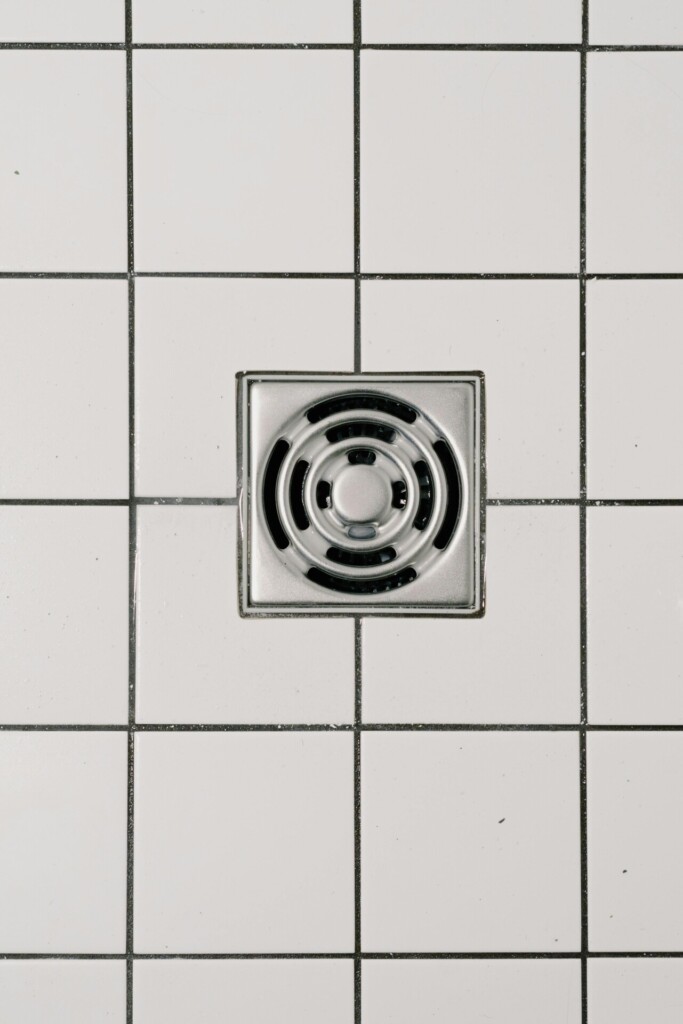
A well-designed commercial kitchen drainage system requires several critical elements to effectively manage wastewater, prevent contamination, and comply with health regulations. As the general contractor, we carefully select and install each component to create an integrated system tailored to the unique demands of commercial food preparation environments. The essential components include:
Floor Drains
Floor drains serve as the primary collection points for wastewater throughout the kitchen. We install drains made from durable, sanitary materials—typically stainless steel—that resist corrosion from harsh cleaning chemicals and acidic food residues. Key features we incorporate include:
- Non-porous surfaces that are easy to clean and disinfect
- Rounded internal corners to prevent bacteria buildup
- Removable strainer baskets to catch food debris
- Slip-resistant grates for safety
We strategically position floor drains near high-volume water usage areas like dish pits, food prep stations, and cooking lines to efficiently capture runoff.
Grease Interceptors
Grease interceptors, also called grease traps, are crucial for preventing fats, oils, and grease (FOG) from entering and clogging sewer lines. We install grease interceptors for most kitchen fixtures, including:
- Wok stations
- Food scrap sinks
- Meat preparation sinks
- Dishwashers
- Floor drains in cooking areas
The interceptors separate and retain grease while allowing water to flow through. We size grease interceptors based on fixture flow rates and local code requirements.
Waste Receptors
Waste receptors collect indirect waste from equipment like ice machines, refrigeration units, and steam tables that cannot connect directly to the drainage system. We install receptors with removable strainers to catch debris and prevent clogs. Proper sizing and positioning of waste receptors is critical to handle anticipated discharge volumes.
Drainage Channels
In high-volume areas, we often incorporate drainage channels or trench drains to efficiently collect and direct large amounts of water. These are especially useful in dish rooms, in front of combi ovens, and around tilting skillets or kettles. We select channel designs that are easy to clean and feature removable grates for access.
Piping System
The piping network connects all drainage components, conveying wastewater out of the kitchen. We use corrosion-resistant materials like stainless steel or cast iron, sized appropriately to handle maximum flow rates. Key considerations in our piping design include:
- Proper slope for efficient drainage
- Accessibility for cleaning and maintenance
- Venting to prevent siphoning of trap seals
Additional Features
To enhance system performance and comply with health codes, we incorporate several other important elements:
- Easily removable gratings for thorough cleaning
- Accessible foul air traps to block sewer gases
- Properly sized outlets to handle equipment discharge
- Backflow prevention devices where required
By carefully selecting and integrating these essential components, we create a drainage system that effectively manages wastewater, prevents contamination, and supports the smooth operation of commercial kitchens. Our expertise ensures compliance with local codes while optimizing system performance for each unique kitchen layout.
| Component | Description |
| Floor Drains | Primary collection points for wastewater, made of corrosion-resistant materials. Positioned near areas of high water usage. |
| Grease Interceptors | Prevent fats, oils, and grease from clogging sewer lines. Installed at kitchen fixtures such as sinks and dishwashers. |
| Waste Receptors | Collect indirect waste from equipment, ensuring separation before entering the drainage system. |
| Drainage Channels | Used in high-volume areas to collect and direct large amounts of water efficiently. |
| Piping System | Conveys wastewater out of the kitchen, using materials like stainless steel for durability and corrosion resistance. |
| Additional Features | Include removable gratings, accessible foul air traps, and backflow prevention devices for enhanced performance and compliance. |
How Do Air Gaps and Indirect Waste Systems Protect Food Safety?
At EB3 Construction, we implement essential plumbing safeguards to ensure food safety in commercial kitchens. Indirect waste systems are required for all food handling equipment and fixtures. We ensure that equipment used for food storage, preparation, and handling discharges through an indirect waste pipe using an air gap, as mandated by plumbing codes.
An air gap is the unobstructed vertical space between the outlet of a waste pipe and the flood level rim of a waste receptor. This physical separation is crucial for preventing contamination. We typically install air gaps that are at least twice the diameter of the outlet pipe, but never less than 1 inch. This generous gap acts as a barrier, ensuring wastewater cannot flow back into food areas during a drainage backup.
It is important to note the difference between air gaps and air breaks. While air breaks provide some separation, they do not offer the same level of protection as air gaps. That is why we use air gaps, not air breaks, for all food safety applications – including floor drains in walk-in refrigerators and freezers.
Our indirect waste systems typically include:
- Floor sinks or hub drains positioned below equipment to catch wastewater
- Piping that directs waste from equipment to these receptors without direct connections
- Properly sized air gaps between pipe outlets and receptor rims
- Sloped floors to ensure proper drainage away from food areas
By meticulously designing and installing these systems, we create multiple layers of protection against potential contamination. This approach helps our clients maintain the highest standards of food safety and comply with health regulations.
While the technical details of plumbing may seem mundane, these systems play a vital role in protecting public health. Proper indirect waste systems with air gaps are among the most important behind-the-scenes elements we install to keep commercial kitchens safe and sanitary. Our expertise in this area gives restaurateurs and food service operators peace of mind, knowing their facilities are built to prevent contamination.
What Grease Management Systems Are Required in Commercial Kitchens?
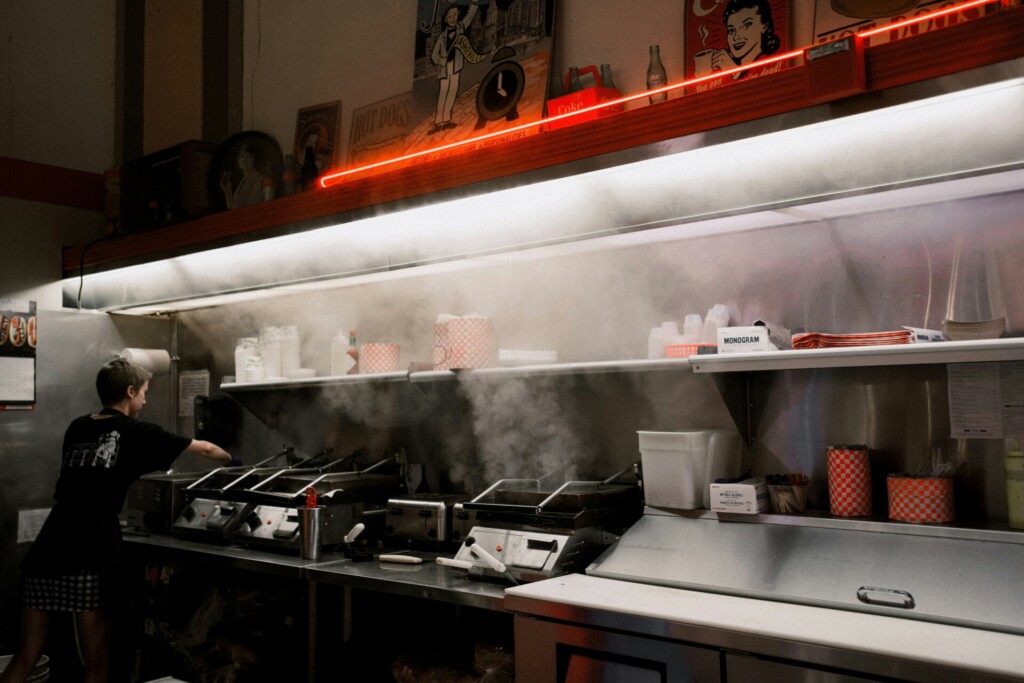
Commercial kitchens must implement effective grease management systems to prevent plumbing blockages and comply with local regulations. At EB3 Construction, we recommend installing grease interceptors for every direct and indirect discharge point where fats, oils, and grease (FOG) may be present. This includes pot wash sinks, meat preparation areas, dishwashers, and floor drains.
Grease interceptors operate on a simple principle — FOG is less dense than water and naturally floats to the surface, allowing for separation and removal. As wastewater flows through the interceptor, grease and oils rise to the top while heavier solids sink to the bottom. The clarified water in the middle can then safely discharge to the sewer system.
Proper sizing of grease separators is critical for effective operation. We calculate the appropriate interceptor size based on factors like peak flow rate and grease production. An undersized system will quickly become overwhelmed, while an oversized one wastes space and money. Our team can analyze your kitchen’s specific needs to recommend the optimal interceptor capacity.
Regular maintenance is essential to keep grease management systems functioning properly. Interceptors must be cleaned out before they reach 25% of their grease retention capacity. For many commercial kitchens, this means monthly or even weekly cleaning cycles. Neglecting maintenance can lead to foul odors, drain backups, and potential health code violations.
There are two main types of grease interceptor systems:
- Complete disposal systems require shutting down kitchen operations for full emptying and cleaning.
- Partial disposal systems allow for continuous kitchen operation by removing only accumulated grease and solids.
The best choice depends on your kitchen’s specific layout and operational needs. Our experts can help determine the most suitable grease management solution for your facility.
Proper grease control not only keeps your kitchen running smoothly but also protects the municipal sewer system from costly blockages. Investing in an effective grease interceptor system now can prevent major headaches and expenses down the road.
| Kitchen Type | Retention Time | Waste Flow Rate | Storage Factor for 8-hour Operation |
|---|---|---|---|
| Fast Food | 1.33 | With dishwashing machine: 6 Gallons; Without dishwashing machine: 5 Gallons | 1.00 |
| Restaurant | 1.00 | Single Service Kitchen: 2 Gallons | 1.50 |
| Leisure Dining | 0.67 | Food Waste Disposer Only: 1 Gallon | 2.00 |
| Dinner Club | 0.50 | 3.00 |
Don’t let FOG buildup disrupt your kitchen operations. Contact EB3 Construction today to discuss implementing a code-compliant grease management system tailored to your commercial kitchen’s unique needs.
What Material and Design Requirements Apply to Commercial Kitchen Drainage?
When it comes to commercial kitchen drainage systems, generic materials or designs simply won’t suffice. The demanding conditions and hygiene standards of professional kitchens require drainage solutions that can rise to the challenge. Let’s examine the key material and design requirements essential for effective and safe commercial kitchen drainage.
Stainless Steel: The Gold Standard
In commercial kitchen drainage, stainless steel is the preferred choice. Several compelling reasons support the use of stainless steel:
- Corrosion resistance: Stainless steel withstands harsh cleaning chemicals and acidic food waste without degrading.
- Durability: It endures the daily wear and tear of a busy kitchen environment.
- Non-porous surface: This prevents bacteria from gaining a foothold and enhances cleaning effectiveness.
- Temperature tolerance: Stainless steel handles extreme temperatures without warping or damage.
These properties make stainless steel ideal for ensuring long-lasting, hygienic drainage solutions in commercial kitchens.
Hygienic Design Features
The design of drainage systems is as crucial as the material used. Important features are incorporated to maximize hygiene:
- Internal radii of at least 3mm: This eliminates tight corners where debris can accumulate, making cleaning more effective.
- Hygienic joints: Our drains have smooth contours, eliminating crevices that could harbor bacteria.
- Dry sump design: This ensures complete drainability, eliminating standing water that can become a breeding ground for microorganisms.
These design elements ensure drainage systems function efficiently while maintaining a sanitary kitchen environment.
Load Capacity Considerations
Commercial kitchens experience high foot traffic and heavy equipment movement. For this reason, we carefully consider load class ratings when designing our drainage systems. Areas with heavy-duty traffic need gratings with higher load capacities to ensure safety and prevent damage. We assess each kitchen’s specific needs to recommend the appropriate load class for different areas.
Optimizing for Hygiene and Maintenance
Beyond material and basic design, features that enhance hygiene and simplify maintenance are also integrated:
- Slip-resistant gratings: These improve safety for kitchen staff while allowing efficient water drainage.
- Easily removable components: Gratings, traps, and other parts can be quickly removed for thorough cleaning and inspection.
- Full drainability: Our systems are designed to prevent standing water, reducing the risk of bacterial growth.
These features promote a cleaner kitchen environment and make the regular maintenance of drainage systems more manageable for staff.
Practical Implications for Kitchen Operations
The material and design choices made have real-world impacts on kitchen operations. For instance, the corrosion resistance of stainless steel ensures drains maintain their integrity despite exposure to harsh cleaning chemicals, reducing the need for frequent replacements. The hygienic design features we incorporate make daily cleaning more effective, potentially reducing the time staff needs for this task.
Moreover, the durability of our drainage solutions means kitchens can operate confidently, knowing their drainage system can handle the demands of a busy commercial environment. This reliability translates to fewer disruptions and smoother overall operations.
By focusing on these material and design requirements, we ensure that commercial kitchen drainage systems not only meet regulatory standards but also enhance the efficiency, safety, and hygiene of the entire kitchen operation. It is an investment in the long-term success and sustainability of any commercial food service establishment.
| Material | Stainless Steel |
| Corrosion Resistance | High |
| Durability | Withstands daily wear and tear |
| Non-porous Surface | Prevents bacterial growth |
| Temperature Tolerance | Copes with hot and cold extremes |
| Key Design Features | Rounded internal radii, hygienic joints, dry sump design |
| Load Capacity | Consideration for heavy-duty and foot traffic areas |
| Additional Features | Slip-resistant gratings, easily removable components |
In summary, the material and design requirements for commercial kitchen drainage extend far beyond simple functionality. By prioritizing stainless steel construction, hygienic design features, appropriate load capacities, and ease of maintenance, we create drainage solutions that play a crucial role in maintaining a safe, efficient, and hygienic commercial kitchen environment.
Conclusion: Ensuring Compliance with Commercial Kitchen Plumbing Standards
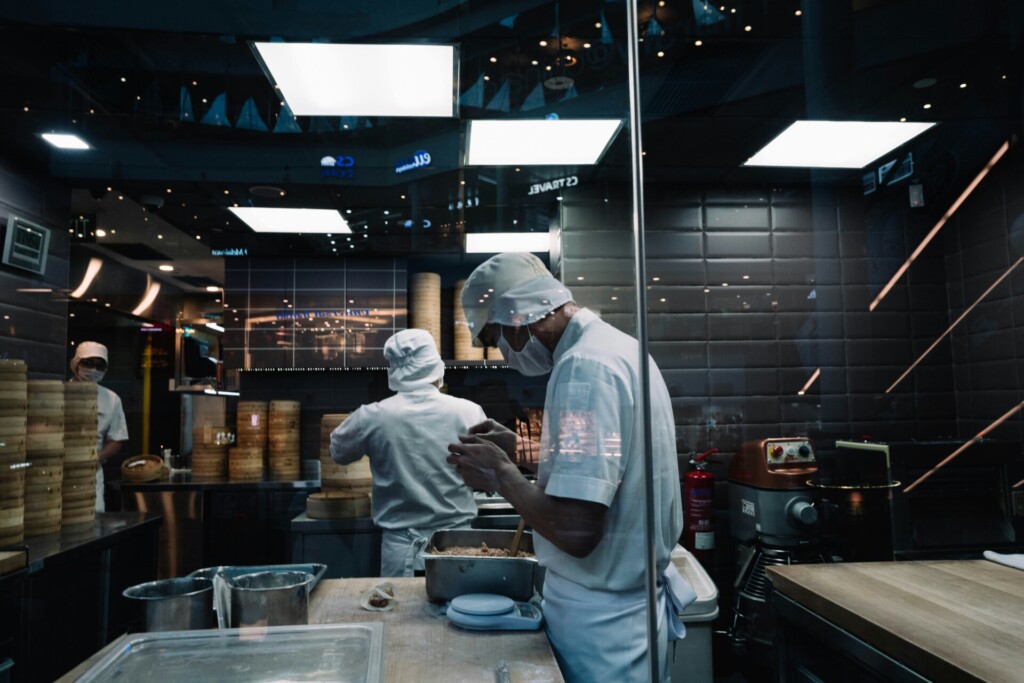
Complying with commercial kitchen plumbing standards is crucial for food safety, operational efficiency, and regulatory compliance. We understand the complexities involved in designing and installing these specialized systems, so we emphasize working with qualified professionals familiar with local codes and industry best practices.
The requirements for commercial kitchen plumbing are extensive and demanding. Key elements include proper drainage systems, indirect waste connections with appropriate air gaps, effective grease management solutions, and the use of hygienic, code-compliant materials throughout. Failing to meet these standards can result in serious legal and public health consequences.
Beyond initial installation, regular maintenance is essential for keeping commercial kitchen plumbing systems functioning properly. Routine inspections and servicing help prevent issues like blockages, contamination, and operational disruptions that can severely impact a food service business. Our maintenance protocols are designed to catch potential problems early and keep systems running smoothly.
By prioritizing compliance and working with experienced professionals, commercial kitchen operators can ensure their plumbing systems support food safety goals, maximize operational efficiency, and avoid costly violations or shutdowns. We have the expertise to design, install, and maintain plumbing systems that meet all applicable codes while supporting your kitchen’s specific needs.
Don’t leave your commercial kitchen plumbing to chance. Contact EB3 Construction today to discuss how we can help ensure your systems are up to code and optimized for your operations.

